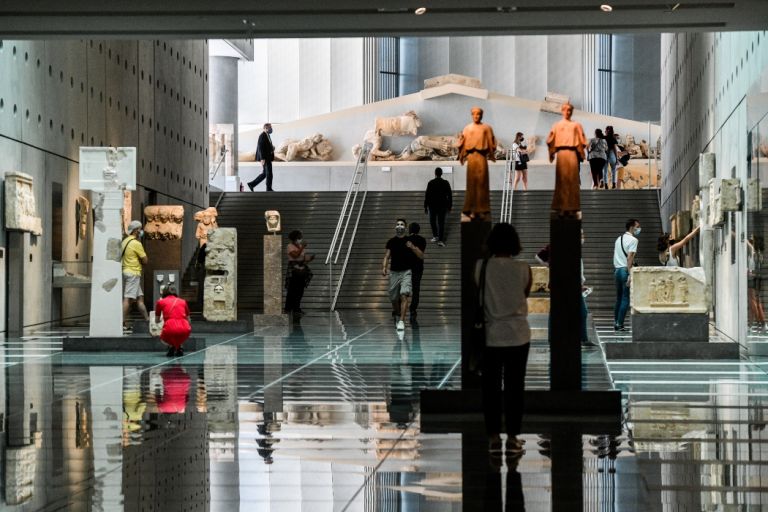New Acropolis Museum Program Explores Water’s Role in Ancient Greece

Πηγή Φωτογραφίας: ΔΙΕΘΝΗΣ ΗΜΕΡΑ ΜΟΥΣΕΙΩΝ ΜΕ ΕΛΕΥΘΕΡΗ ΕΙΣΟΔΟ-ΣΤΙΓΜΙΟΤΥΠΑ ΑΠΟ ΤΟ ΜΟΥΣΕΙΟ ΤΗΣ ΑΚΡΟΠΟΛΗΣ (ΤΑΤΙΑΝΑ ΜΠΟΛΑΡΗ/ EUROKINISSI)
In the heart of Athens’ historic Museum neighbourhood, archaeologists have uncovered more than 100 ancient wells, shedding new light on the city’s water infrastructure across the centuries.
These wells, dating to various historical periods, served as the primary source of water for local residents. Remarkably well-preserved, many featured clay linings with oval indentations — designed as handholds and footholds — to assist in their construction and maintenance. At the surface, the well mouths were surrounded by protective clay or stone wellheads, from which water was drawn using wooden pulley systems fixed into specially carved sockets.

This significant find is part of the Acropolis Museum’s new interpretive program, “Aquatic Routes: Water from Nature to Myth and the Polis.” Led by a museum archaeologist, the gallery talk invites visitors to explore the role of water in ancient Greek life — from practical uses to its symbolic and healing associations.

Through carefully selected artifacts on display in both the museum’s main galleries and its excavation site, the program offers a unique perspective on how water shaped ancient society, urban planning, and spiritual beliefs.
🔗 For more information and to book your visit: Acropolis Museum – Aquatic Routes
Source: greek city times
Διαβάστε όλες τις τελευταίες Ειδήσεις από την Ελλάδα και τον Κόσμο






Το σχόλιο σας